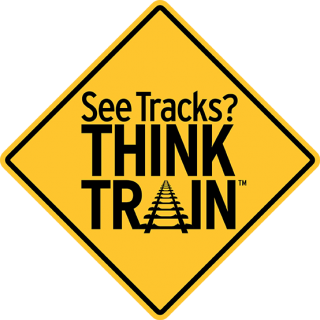Operation Lifesaver, Inc. urges drivers to use caution at all highway-rail grade crossings
WASHINGTON, DC, February 25, 2015 — Recent high-profile grade crossing collisions in Oxnard, Calif. and Valhalla, N.Y. highlight the need for all drivers to use caution at every highway-rail grade crossing, a national nonprofit rail safety education group says. Operation Lifesaver, Inc., which provides free safety presentations for motorists and pedestrians throughout the U.S., warns that rail safety is something everyone should take seriously.
“These tragic collisions illustrate the devastating effect that vehicle-train crashes at highway rail grade crossings can have on families and communities. Operation Lifesaver’s safety tips can help motorists and pedestrians avoid the potential dangers that they face at all highway-rail intersections and along train tracks,” says Joyce Rose, Operation Lifesaver, Inc.’s President.
Rose noted that overall, crossing incidents have decreased in the U.S. from a high of about 12,000 in 1972 to approximately 2000 incidents in 2013. Preliminary Federal Railroad Administration statistics show that in 2013, 46 percent of all crossing collisions involved passenger vehicles; the second highest number, 16 percent, involved tractor-trailers.
Operation Lifesaver’s free safety presentations help drivers, students, first responders, and other groups avoid the potential dangers that they face at all highway-rail intersections and along train tracks. Participants learn critical safety tips, such as calling the emergency phone number that is posted at each railroad crossing in case a vehicle is stuck or a signal malfunctions.
Rose offered Operation Lifesaver’s tips for crossing tracks safely:
• Always expect a train on any train track, at any time.
• Slow down as you approach all railroad crossings and be prepared to stop if necessary.
• Never drive around lowered gates – it’s dangerous and illegal.
• Proceed through a crossing only if you are sure you can completely clear it without stopping.
• Trains can’t stop quickly because of their size and weight.
• Don’t stop on the tracks, it’s illegal.
• If you suspect a signal is malfunctioning, call the number posted on or near the crossing signal or your local law enforcement agency.
• If you find yourself in the path of a train, get out of the way, and if your vehicle is stuck, immediately get out of the vehicle and away from the tracks.
“The goal of our national “See Tracks? Think Train!” campaign is to make caution an automatic habit every time you approach a railroad crossing — much like the habit of fastening your seatbelt every time you get into a vehicle,” Rose concluded.
###
Tweetables!
About Operation Lifesaver
Operation Lifesaver's mission is to end collisions, deaths and injuries at highway-rail grade crossings and along railroad rights of way. A national network of trained volunteers provides free presentations on rail safety. Learn more at http://www.oli.org; follow OLI on Facebook, Twitter, Instagramand Pinterest.
